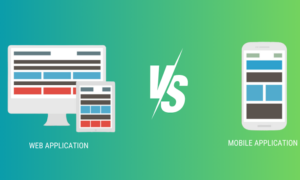If you want to get your business all set to enjoy computer vision, you don’t have to do so much. With a few steps and the guide contained in this post, you’ll know what questions to ask and answer, as well as the right methods for implementing computer vision in your business and getting the benefits of Computer Vision Development services.
Benefits of computer vision for business
Computer vision has a lot of benefits for your business. It improves the efficiency of your business processes, increases safety and security, and also boosts customer business experience and satisfaction.
With Computer vision, you can get informative business analysis in real-time and reduce business overhead costs and improve your ROI.
These benefits are applicable across a wide range of industries including manufacturing, retail, commercial real estate, transportation, etc.
Computer Vision development services
Before deciding on the computer vision development services to engage for your business, you need to consider the current status of your business. Do you have just a sketchy idea of your project, or do you have a bulk of information to leverage?
Whatever the case might be, you will find several services that will match your business nature and needs.
However, trying to find a match on the internet can be confusing because there are so many variations of computer vision development services, solutions, and approaches.
So, you need the guidance of an expert IT professional to decide on the service that’s best for you.
How to effectively implement Computer vision (CV) in your business
The first step is to make a prototype in preparation for your CV applications.
At this point, you need to begin by understanding the benefits that computer vision holds for your business. Imagine and draw up some potential cases where you can use and implement CV services in your business.
You also need to consider how much hardware and personnel you’ll need for the job, as well as the cost implications.
After learning the benefits of a development platform, you get to decide how to roll out computer vision in your business in a systematic format through application tests and team meetings.
After that, you need to choose a suitable model and set up the model infrastructure.
At this stage, you’ll need to decide on a computer vision model that best interprets and translates your visual data on the go. With hundreds of models at your disposal, the best way to navigate them is through categories such as image classification, object detection, semantic segmentation, pose estimation, or semantic segmentation.
After choosing your model, you’ll need to select the hardware you want to use to develop your infrastructure.
At this point, you have to choose between the edge or the cloud.
Deciding on a computing framework is what you do at this stage. You’ll need to study and consider the features and benefits of edge computing and cloud computing and decide on which one to use. The edge is a better recommendation because it is cheaper, faster, and safer.
Always make use of real-time analytics to guide your decisions.
Once your computer vision application has been developed and deployed, the next step is to design a process to collect and organize data, and leverage real-time analysis.
The presence of this architecture is necessary to ensure that you get the best ROI from your computer vision implementation.



































